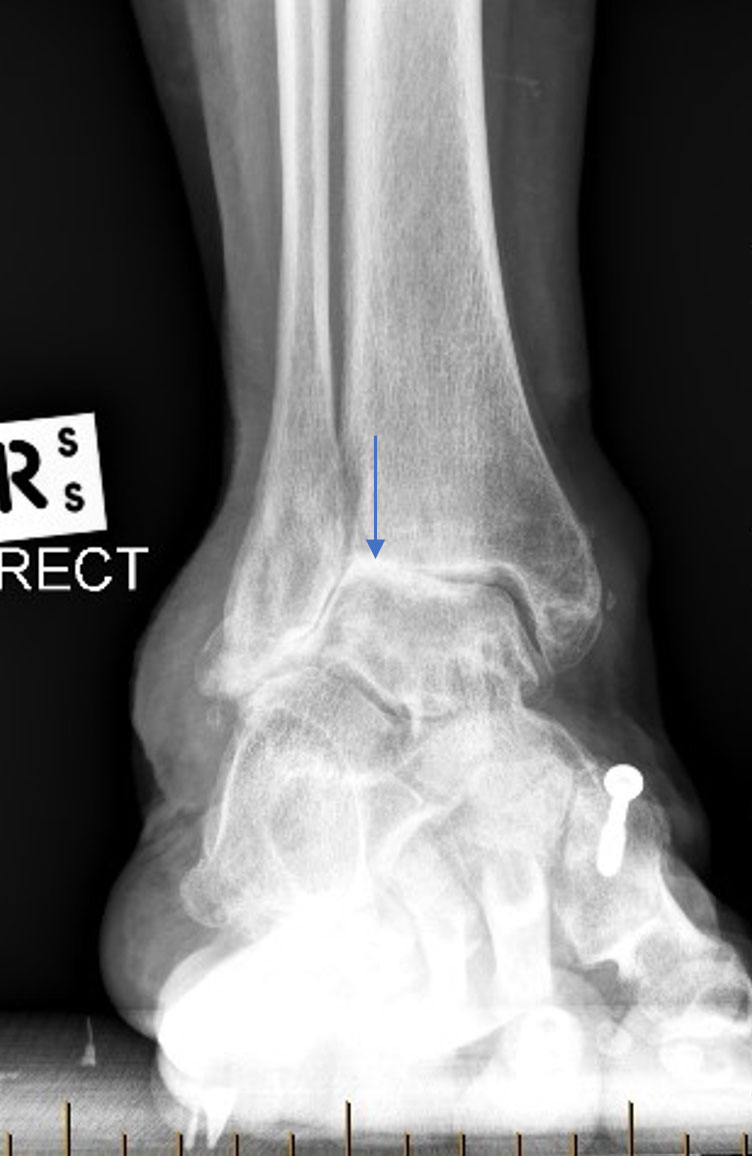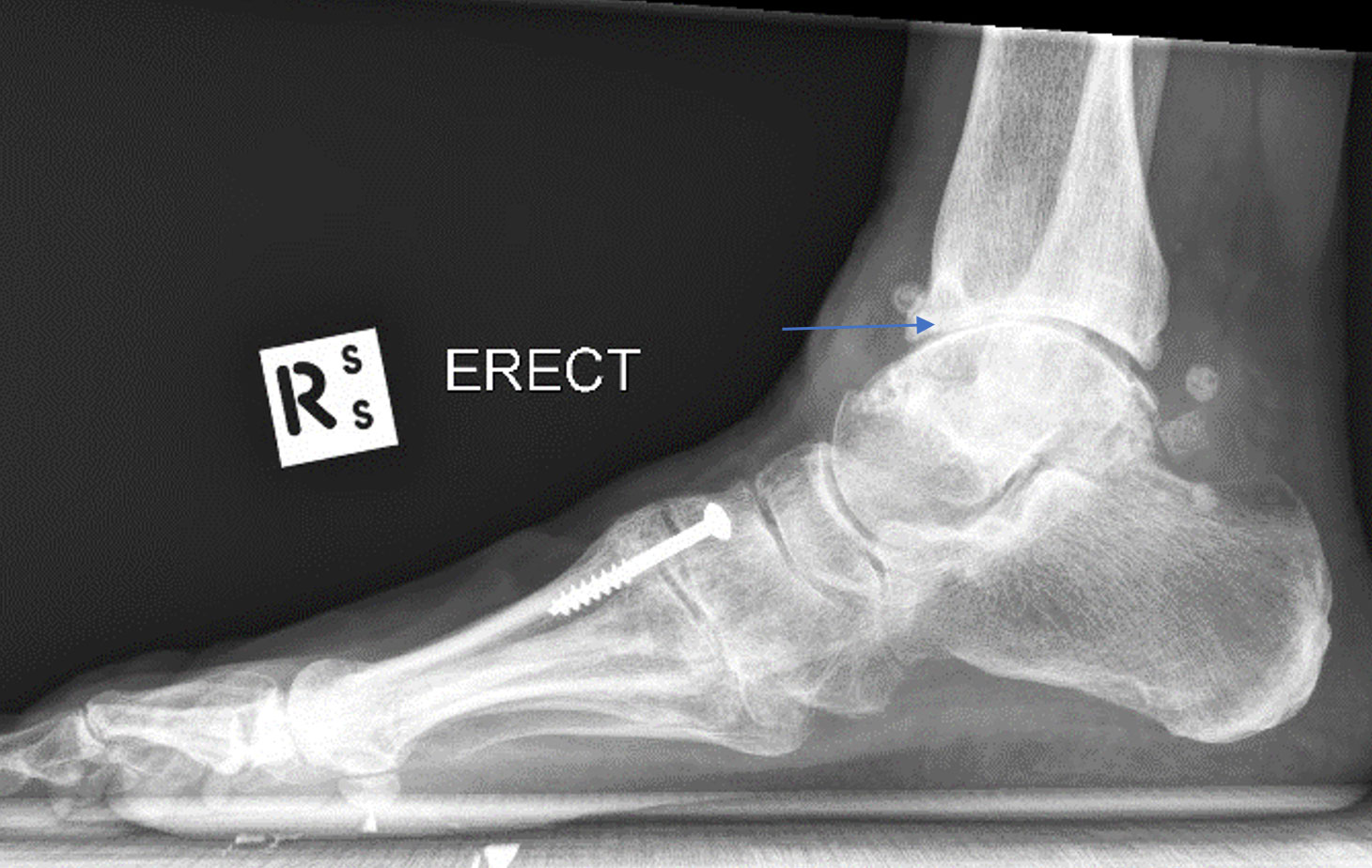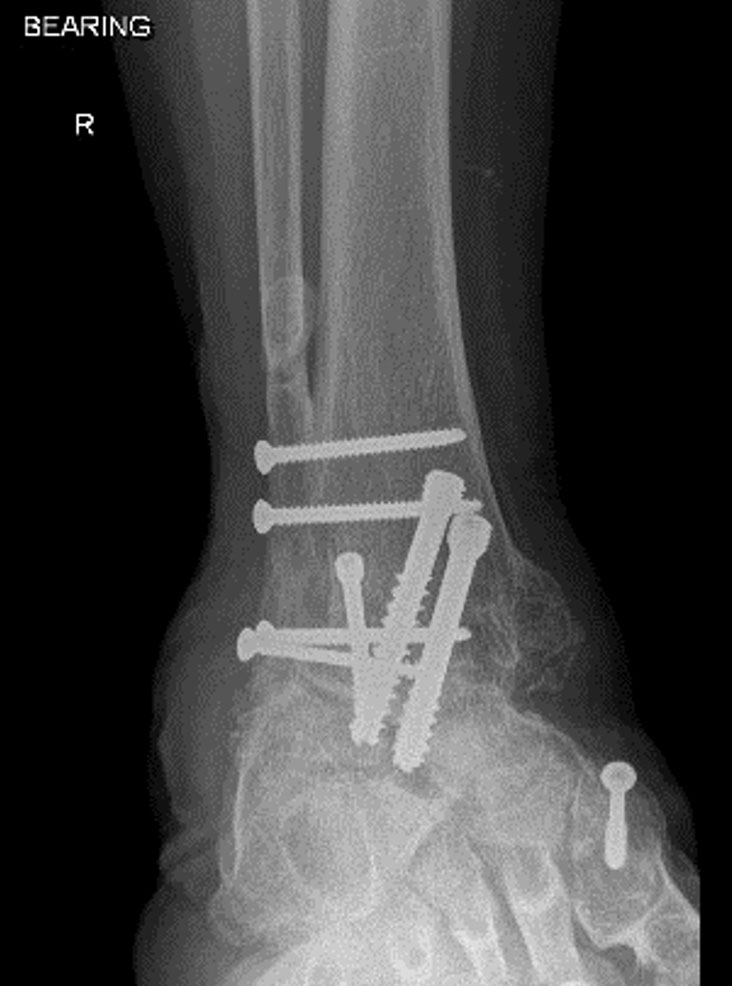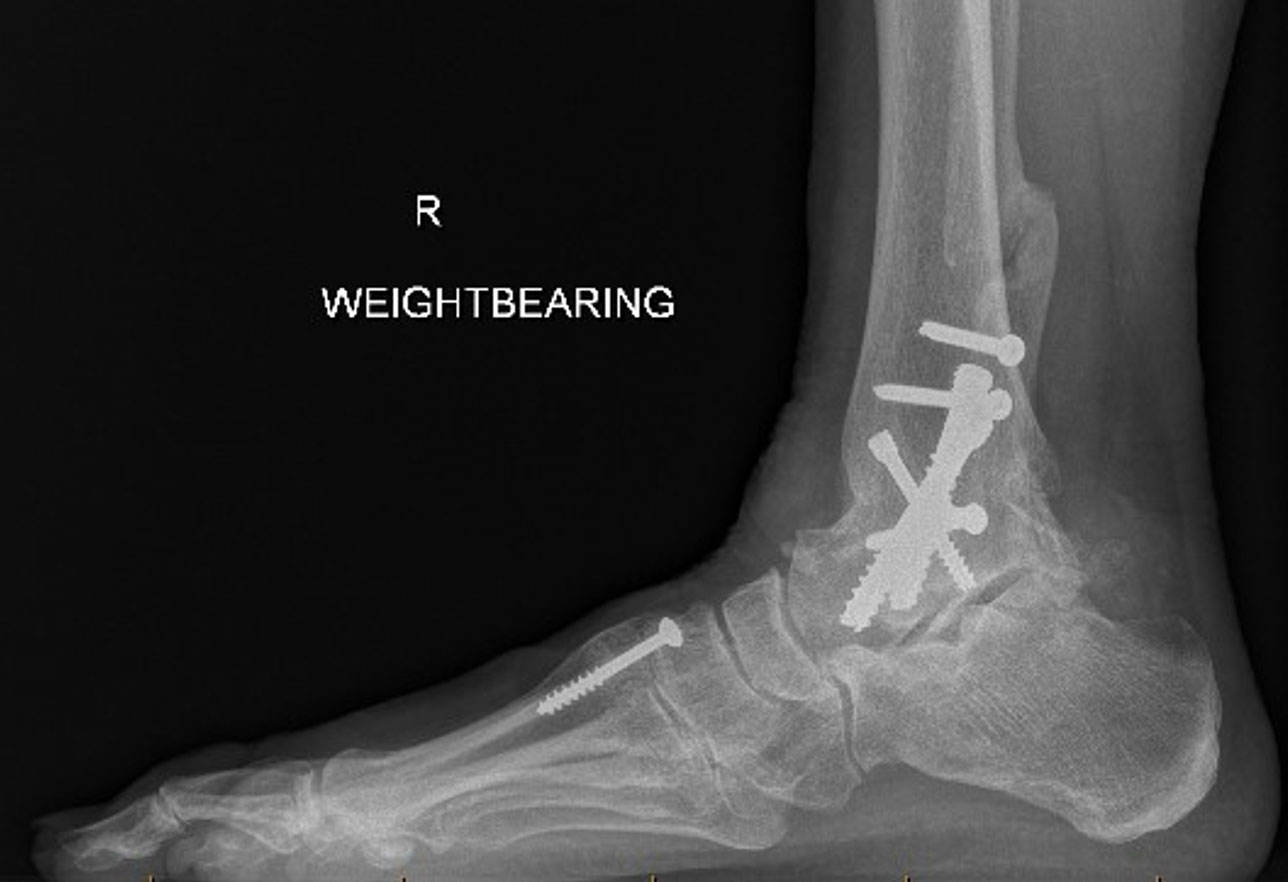When an arthritic ankle joint is painful and disabling, and non-surgical treatments have failed, an operation to manage the problem is often necessary, and this can take the form of an arthrodesis.
Fusion and joint replacement (arthroplasty) are the only two definitive treatment options for people with advanced ankle arthritis. In an older age group, replacement is often a better option, as it retains ankle motion, but this type of procedure is usually not appropriate for those who are younger and more active. Additionally, there are a number of contraindications for a joint replacement, even in older people, usually when the perceived risks of the operation outweigh the benefits, and in these situations a fusion can be the better choice due to its generally lower risk profile.
In general terms, arthrodesis means to turn a joint into solid bone, so that the joint no longer exists and there can longer be movement in that location. However, the eradication of the affected joint also means the eradication of any pain associated with the arthritis, which by definition no longer exists and cannot return in this location.


Plain X-rays views from the front and side demonstrate a typical case of ankle osteoarthritis with full-thickness cartilage loss, as indicated by arrows.
Common to every ankle arthrodesis is the need to remove any remaining articular (joint) cartilage, the preparation of bone surfaces to improve their blood supply and healing potential, the close coaptation of these surfaces, and the introduction of fixation devices such as transfixing compression screws or bridging plates, to hold everything still during the healing process.
An ankle arthrodesis can be performed using one of many different techniques. The approach and fixation method depend on the pattern and severity of the arthritis. Open operations are performed through larger surgical approaches and with direct joint visualisation to allow deformity or malalignment to be more effectively addressed. Arthroscopically-assisted fusions are completed using tiny “keyhole” incisions, to indirectly visualise the joint surfaces and prepare them.
Post-operatively, regardless of the method used, all healing ankles need to be kept still for around ten weeks in a cast and not weight-bearing on the extremity is mandatory during this time! Walking aids are essential, and these include crutches, knee-walker scooters and walking frames. Everyone takes regular oral medication to reduce the risk of blood clots. A CT examination is used to assess the quality of progress to bone union before its deemed safe to starting walking on the foot again. However, it can take a further eight weeks to fully recover.


X-rays views on the same patient as above following a healed ankle arthrodesis. Note the buried larger headless screws and four separate smaller screws used for fixation of the lateral malleolus on the lateral side of the fusion as a supplementary “strut”. The original ankle joint line is no longer visible.
If you would like advice on whether ankle fusion surgery would be suitable in your situation, please make an appointment with Dr Newman.
FAX 02 8711 0120
drasnewman@outlook.com
NORWEST
Orthopaedic Associates
Lakeview Private Hospital
Suite 1, Level 1
17-19 Solent Circuit
Norwest NSW 2153
WAHROONGA
Suite 601, SAN Clinic
Sydney Adventist Hospital
185 Fox Valley Rd
Wahroonga NSW 2076
© 2015-2024 Dr Scott Newman | Privacy Policy | Disclaimer | Website design: WebInjection